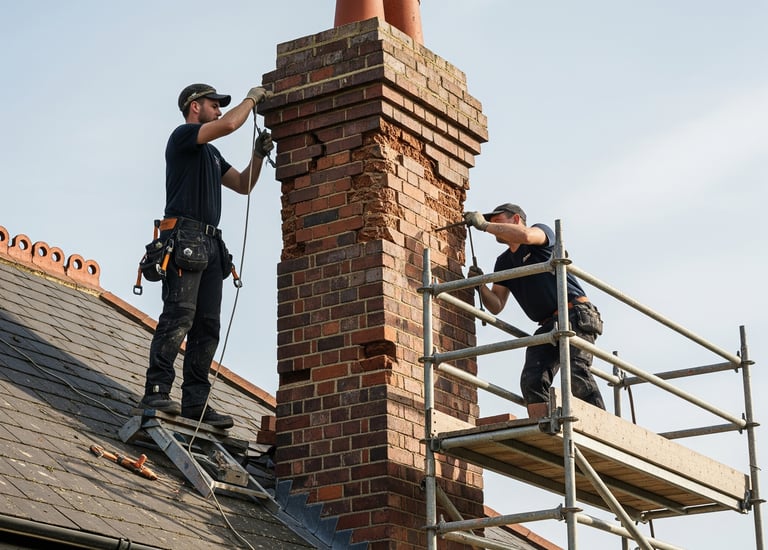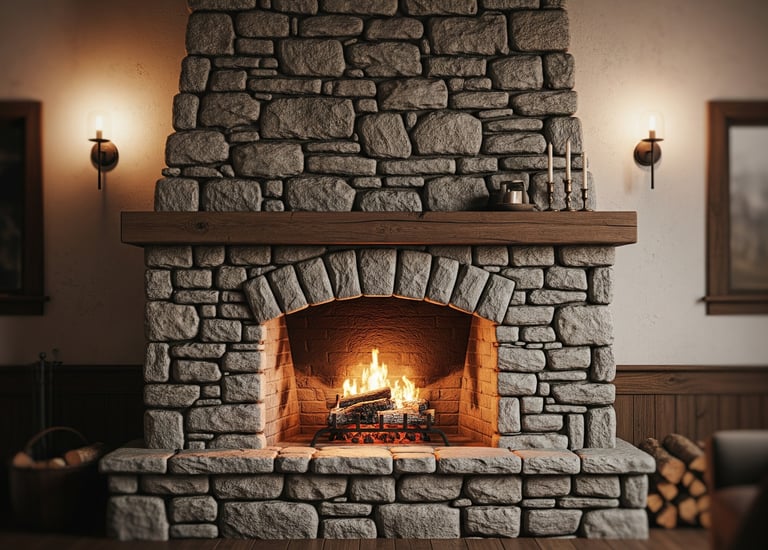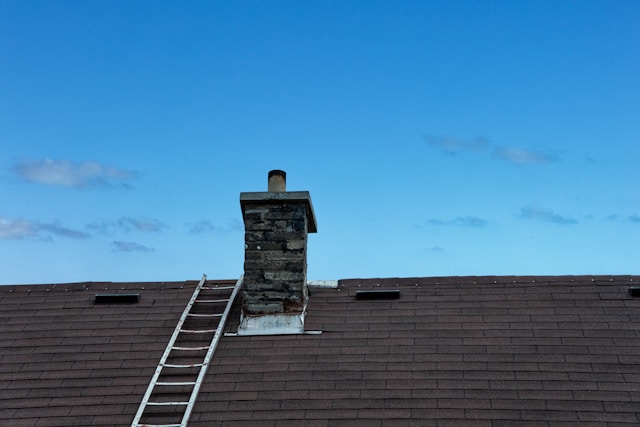The 7 Signs Your Edmonton Chimney Needs Repair
A chimney is more than just a decorative feature; it's a critical safety component of your Edmonton home. Due to our city's severe temperature fluctuations—from the deep freeze of January to the heat of July—chimneys in Northern Alberta are especially vulnerable to weather-related deterioration.
Ignoring early warning signs can lead to expensive water damage, structural failures, or even house fires.
Here are the seven clear signs that your chimney is crying out for professional chimney repair service.
1. White Staining on the Exterior Masonry (Efflorescence)
If you notice a white, powdery, or chalky deposit on the outside of your brick chimney, especially near the top or base, this is called efflorescence.
What it means: This is mineral salt residue left behind when water penetrates the brick or mortar, dissolves the salts inside, and evaporates on the surface.
The urgency: Efflorescence is a definitive sign that moisture is entering your chimney system. If left untreated, the moisture will freeze and thaw within the masonry (spalling), causing the bricks to flake and crumble. In Edmonton's winter, this process accelerates structural damage quickly.
2. Bricks or Mortar Cracks Around the Crown
The chimney crown is the concrete slab at the very top that caps the masonry and protects the flue. It acts as the umbrella for the entire chimney.
What it means: If the crown has noticeable cracks, gaps, or is missing a proper drip edge (the slight overhang that directs water away from the bricks), water is actively running down the face of your chimney.
The urgency: This is the most common cause of major chimney failure. Water penetration at the crown can rot the internal wood frame (chimney chase) and lead to full structural deterioration, often requiring a costly rebuild of the stack.
3. Flaking or Spalling Bricks
Spalling occurs when water enters the brick or mortar, freezes, and expands, forcing the brick's surface layer to peel, pop out, or fall off the stack.
What it means: The protective face of your chimney's masonry is failing, exposing the porous inner materials to more water and accelerated damage.
The urgency: If you see pieces of brick or mortar on your roof or on the ground around the chimney base, the structural integrity is compromised. This is a crucial sign that a masonry repair specialist is needed immediately for tuckpointing or partial replacement.
4. Rusting Components (Damper, Firebox, or Exterior Caps)
Rust is a reliable indicator of excessive, prolonged water exposure.
What it means: Check the metal parts. If the metal damper (the handle or plate inside the firebox) is visibly rusted, or if your exterior chimney cap is rusty, it confirms rain and moisture are getting inside the flue.
The urgency: A rusty damper won't seal properly, reducing energy efficiency and potentially allowing air or moisture in when the fireplace is not in use. A rusty cap will eventually fail, creating a large, unobstructed opening for rain and snow.
5. Water Stains in the Attic or on the Ceiling
If you have a masonry chimney passing through your attic space, water stains here or on the ceiling near the fireplace are a major red flag.
What it means: This leak is occurring behind the flashing where the chimney meets the roof. The flashing may have corroded or been installed incorrectly (a common issue in older Edmonton homes).
The urgency: This is an active leak that is damaging your roof deck, rafters, and drywall. Chimney re-flashing is required, which should be performed by an expert who understands the complex relationship between the roof and the masonry.
6. Slices of Clay Liner in the Fireplace
If you have a traditional clay flue liner and find small, tile-like pieces (shards) in your firebox or hearth area, this is a serious sign of internal failure.
What it means: The corrosive byproducts of combustion, or even a previous chimney fire, have caused the clay liner to crack and degrade.
The urgency: The liner is what contains the heat and smoke, protecting the surrounding structure. A damaged liner creates a direct path for high heat or embers to ignite nearby wooden framing, posing a severe fire hazard. A Level 2 inspection and potential liner replacement (typically with stainless steel) is mandatory for safety.
7. A Noticeable Shift or Tilt (Leaning)
If your chimney stack appears to be pulling away from the house or is visibly crooked when viewed from the street, this is a structural crisis.
What it means: The foundation or chimney footing has settled or eroded, leading to a failure of the structure.
The urgency: A leaning chimney is an extreme safety hazard and is at risk of collapse, particularly under the stress of heavy winds or snow load. This demands an immediate, professional inspection to determine if a full chimney rebuild and foundation repair are necessary.
Don't Risk it in the Edmonton Cold—Get a Certified Inspection
If you recognize any of these 7 signs, the damage is already underway. Addressing it quickly can save you thousands of dollars in major structural repairs down the road.
Contact our certified Edmonton team today to schedule your inspection and get a transparent repair quote.




Get A FREE Instant Quote!
"Our chimney needed some serious protection from the elements. Edmonton Chimney Repair's recoating service was exactly what we needed. They were thorough, explained the process, and left no mess. Our chimney now sheds water beautifully, giving us great peace of mind. Excellent work for Edmonton chimney maintenance!" — Laura Garcia, Mill Woods, Edmonton


★★★★★
Chimney Repair Edmonton
Providing comprehensive chimney services for homeowners across Edmonton and the surrounding areas. From essential chimney inspections and expert masonry repair and tuckpointing to crucial chimney crown and cap installations or repairs, and protective waterproofing solutions, we ensure your chimney is safe, efficient, and well-maintained.
CONTACT US
gET A FREE QUOTE
© 2025. All rights reserved.
SERVICES
